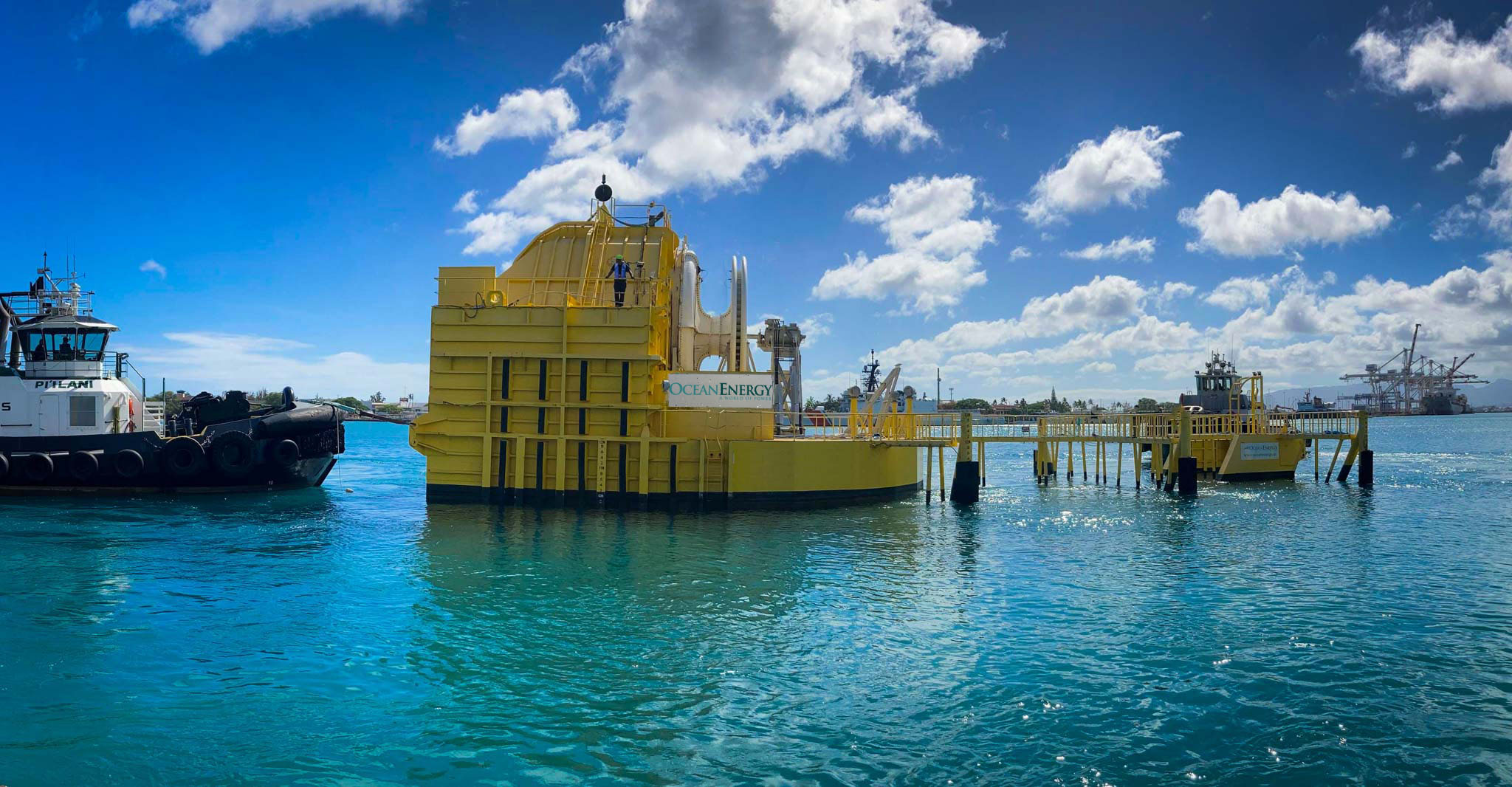A €19.6 million project billed as a stepping stone towards large scale wave energy commercialisation will see the world’s largest capacity floating wave energy device tested in Orkney.
WEDUSEA is a collaboration between 14 partners from across the UK, Ireland, France, Germany and Spain. It’s being co-ordinated by the Irish company OceanEnergy, which has developed the OE35 device.
The technology floats on the ocean’s surface and incorporates a trapped air volume, with the lower part open to the sea. Wave pressures at the submerged opening cause the water to oscillate and drive the trapped air through a turbine to generate electricity. This energy can be exported to the grid or used in other offshore applications.
The first phase of the pioneering project will focus on the design of a 1 MW OE35 floating wave energy converter. This will be followed by a two-year grid connected demonstration at the European Marine Energy Centre’s (EMEC’s) Billia Croo wave energy test site in Orkney.
The project aims to decrease the levelised cost of energy (LCOE) and create a pathway towards a 20 MW pilot farm. The project will also look at opportunities for reuse and recycling of components at the end of the operations life of the device.
WEDUSEA is co-funded by the EU Horizon Europe Programme and by Innovate UK, the UK’s innovation agency.
Myles Heward, Project Manager at the European Marine Energy Centre, says:
“The innovative actions taken in this programme aim to improve the efficiency, reliability, scalability and sustainability of wave energy technology, and reduce the LCOE of the technology by over 30%. This will help to de-risk investments in wave energy.
“For the WEDUSEA project, EMEC will provide metocean, bathymetry and geophysical data to feed into the design criteria for the device and facilitate planning of offshore operations. The deployment at EMEC’s Billia Croo test site will enable collection of valuable data on performance and environmental impact. This will include a series of field campaigns spanning underwater and airborne acoustics, biophysical assessment of wave dynamics, fish aggregation and seabird analysis, to assess the connection between local species and technology operation. This data will build on existing environmental studies to provide regulators with improved understanding and reduced uncertainty around environmental impacts of wave energy.”
